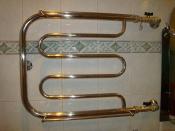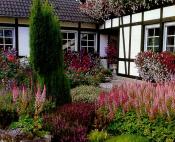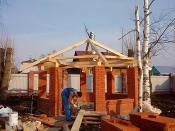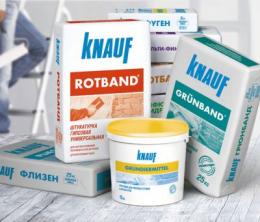Search
Login
Recommended
Plastering and finishing work
In various forms, clay, lime and cement plasters have been used since ancient times. It is extremely difficult to make a good finish with solutions. Currently, to facilitate these tasks, in the trade there are ready-made mixtures for all occasions. We will talk about the plaster and putty materials that are used for exterior and interior walls.
Content
Preparing for plastering
Finishing work in the building begins, after the work with brickwork, installation of partitions, installation of pipelines, electrical wiring is completely completed.
Plaster is a finishing layer on the surfaces of various structures, leveling these surfaces or giving them a certain shape.
Plaster protects the building from destruction by atmospheric precipitation, protects against fire, maintains heat and hygiene of the room.

Before proceeding with plastering, before starting work, it is necessary to check all surfaces for cavities and protrusions, since deviation of the surface from vertical or horizontal leads to an increase in labor and material costs, and a deterioration in the quality of plastering.
The preparation for plastering any surface includes: cleaning from dust, dirt, grease stains, creating the necessary roughness on smooth surfaces, which contributes to better adhesion of the plaster and increase its service life.

From dust and dirt, surfaces are cleaned with rags, pressurized water or a sandblasting machine.
Bituminous and grease stains are removed mechanically.
Insufficiently rough surfaces, processed by a notch or sandblasting apparatus. Clean old paint with a scraper, burn it out, and remove it chemically.
If the seams of the masonry are embroidered, they are cut down to a depth of at least 1 cm. After that, they are cleaned with a steel brush.
If the concrete surface was made in a metal formwork and there is not enough roughness on it, then they must be incised.

If in brickwork or concrete there are weak, easily beaten places, they are cut down to a solid foundation. The next operation to prepare for the plaster is to check the verticality of the walls, it is done as a rule with a level. As a result of the inspection, different types of stamps and lighthouses are installed on the surface of walls and ceilings, they determine the future plane of the plastered surface.
Dry mortar mixes for leveling walls and ceilings
Currently, when carrying out plastering works, various ready-made dry mixes are often used.
These compositions for walls and ceilings are improved dry mixes of mineral components and special additives.
The composition of the modified dry mixes includes: binder (cement, gypsum, lime), aggregates (sand) providing the optimal volume, polymer additives.
Polymeric additives have an insignificant fraction of the total volume, but they affect all metabolic processes (hardening speed, stackability), determine water consumption, increase the porosity and frost resistance of mixtures, its adhesion (adhesion to the surface), and resistance to deformation.

Mixtures for leveling walls and ceilings vary in thickness of the applied layer - from 10 to 30 mm.
Naked brickwork is plastered in three layers:
- the first layer is rough, it makes preliminary alignment;
-second layer - intermediate (waterproofing materials);
- third layer - applied with a thickness of 1 to 2 mm. and prepares a wall for finishing.

There are plaster mixtures made on the basis of gypsum, they are universal in application for interior decoration.
Gypsum plaster mixes fireproof, hygienic, harmless to humans.
Indoors, they create an optimal microclimate, absorb moisture when there is an excess of it, and give it up when there is a lack, and prevent heat loss.
It is possible and even necessary to purchase products manufactured on the territory of Russia; in quality it is comparable to European counterparts, but cheaper.
Finishing work is carried out at a temperature of +5 to + 30 degrees and air humidity not more than 70%.
Highly absorbent surfaces (cellular concrete, plaster, lime-sand concrete) before plastering, are treated with a primer or a mixture of PVA glue and water (1: 1 ratio).
The primer is applied evenly, use a spray gun, roller or brush).
Plaster mortar is applied mechanically or manually using a smooth spatula or trowel.
Then, the surface is leveled with a long steel ruler - the rule.
The subsequent layer of plaster is applied only after the previous one has completely dried.

Plaster is a relatively soft material.
Proverb The stronger, the better, in this case it is not relevant, since the mixture into which too much cement has been added can crack and even break pieces out of the base.
High-quality plaster should firmly adhere to the surface, allow water vapor to pass well (breathe), be easy to apply and level, be flexible and not soak.
Water retention capacity is one of the important indicators.
Leveling mortars and plasters are not recommended for use with wooden and plastic substrates.
Putties
After plastering, the surface to be painted is finished with special soft masses - putties.

They are designed to seal small defects, cracks, scratches, they are applied with a finish layer of no more than 1-2mm.
Indoors, gypsum and polymer based putties are used, and outside - based on cement.
When choosing a putty, pay attention to its color, appearance, viscosity, impact resistance and the ability to polish.
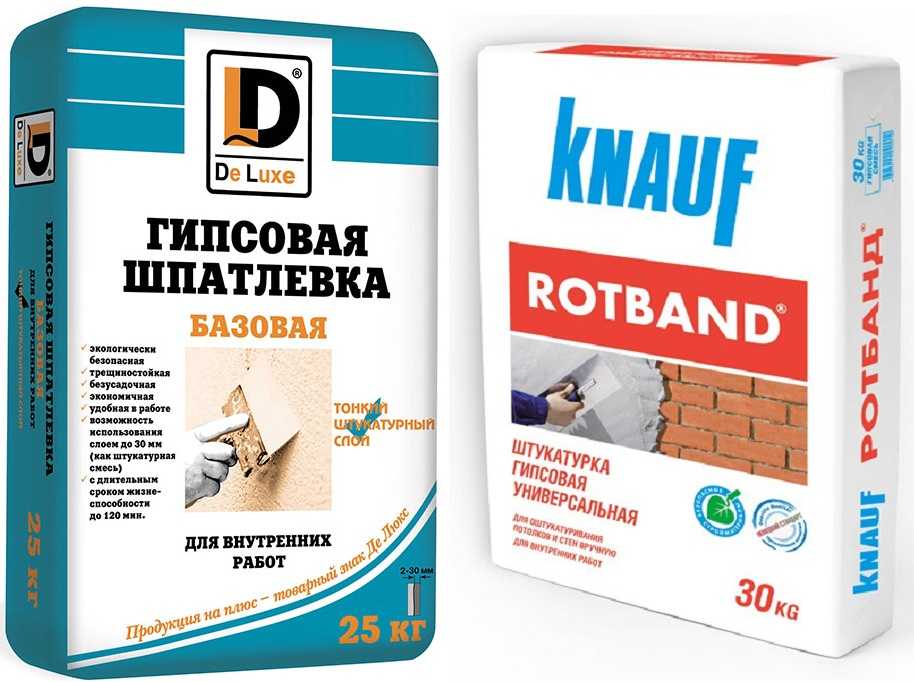
Experts recommend the purchase of plaster or cement, modified with polymers, putty. Gypsum putties are characterized by high plasticity, whiteness, ease of application, ease of grinding, but they are used only for finishing dry rooms.
The material is cement-based, practically inferior to gypsum, while it has increased moisture resistance, can be used in wet areas.

Cement putty, ground 1-2 days after application, as it gains strength gradually.
